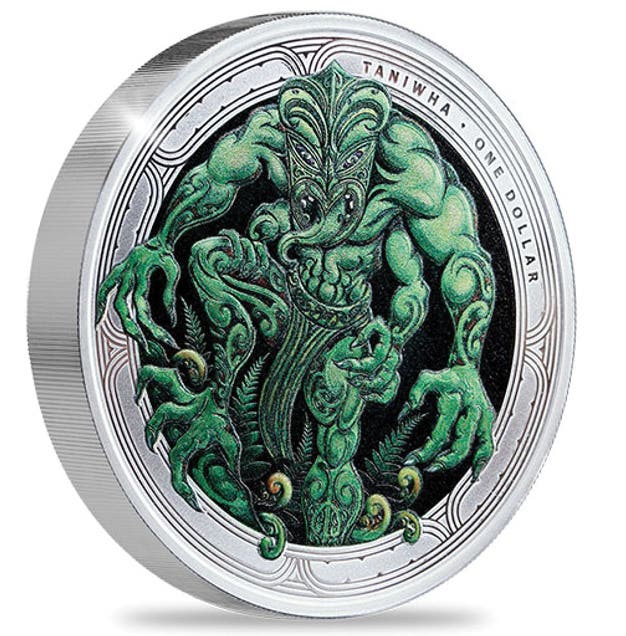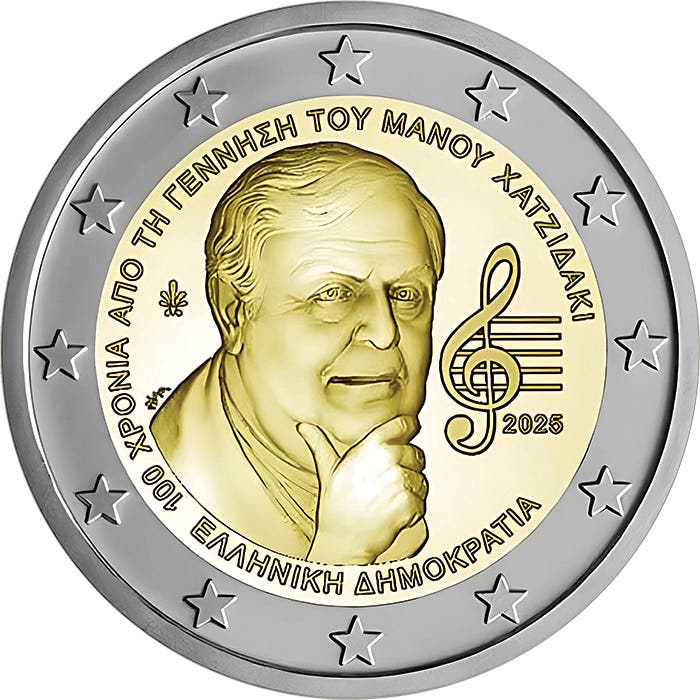Gustav Vasa took charge of Sweden
By Bob Reis There is a kind of temper of the times when similar kinds of things happen all over the place. I look at history a lot as part…
By Bob Reis
There is a kind of temper of the times when similar kinds of things happen all over the place. I look at history a lot as part of my job. There are these general tendencies that develop over time and one day, in retrospect, things are obviously different. And then, occasionally, there are these pivotal periods of a few years when something changes, then something else, then more change, sometimes disorder maybe, then afterwards everything is different. Like you’re driving through the mountains in the rain and you come around a bend and there’s the valley with the big city in front of you.
The first years of the 16th century were like that.
I was reading Josephus, the first century historian of the Jewish people. He wrote about how the general concept of governance in the world was absolute personal dictatorship, that the desire for other people’s stuff was a sufficient justification for offensive war. Josephus pointed out that his religion had laws that treated everyone the same, king to beggar, and demanded that people treat each other nicely while other people had actual gods of meanness and cruelty.
Conflict between haves and have-nots has been going on at least as long as the start of the bureaucratic states around 6,000 years ago.
I’m thinking about why/how the European “thing,” maybe the word “outlook” is a reasonable way of thinking about it, came to dominate the world until this very moment. There is the scientific element of course, yielding better weapons, but I am thinking that there was also a political element. I’m going to go out on a limb and call it “me too-ism.” The idea that the boss is not absolute, that his (rarely her) personal will is the only relevant factor, that other people, the general populace, must be considered.
In 16th century Europe, a new power-wielding class had fully emerged and become practically independent of the old military noble structure evolved from Roman times. That was the merchants, united for lobbying purposes into guilds and leagues. Mercantile activity is by nature outwardly directed, where there are more opportunities, the old military noble outlook was defensive/offensive, and reasons for offensive activity were somewhat bound by the laws of the religion they happened to have, which happened to be Christianity, which prohibited predatory wars, wars had to be defensive only. Other religions, some of them, didn’t have that particular moral stricture, and to the Europeans it was often only a formal requirement that the war starter had to come up with a story of how the other side had caused an injury that had to be redressed, rather than just wanting to own that port or something.
Nobles, with their local tolls, were a problem for merchants, who would rather deal with one set of rules. Merchants tended to seek assistance for their enterprises from kings, who had a longer reach than local nobles. The kings, in response to the greater needs and larger budgets required of facilitation of trade, began to dust off the old monarchical concepts of infallibility, divine right, absolute authority. Nobles of course resisted the proposed reduction of their status but the flow of events was going in the direction of larger enterprises. Resistance was futile.
Let’s see some of what was happening in a certain year in the 16th century. How about 1521?
China was inward looking, the emperor was calling his reign Jia Jing. We know his coins but he was a recluse. China was corrupt and inward looking. India was fragmented. Iran, after centuries of foreign occupation, was unified under the Shia shah Ismail I Safavi, who, I found in my research, was a descendant on his mother’s side of Byzantine emperors. He, it turns out, was one of those modernizing absolute monarchs of the time, founder, in a sense, of “modern” Iran. Turkey, or, as known then, the Ottoman Empire, was ruled by Suleiman the Magnificent, another of those larger than life 16th century rulers. Who remembers anything about his father? But we remember Suleiman, if only by name.
In Europe a guy named Charles Hapsburg was simultaneously king of Spain and Holy Roman emperor. Under his auspices Cortez conquered the Aztec emperor in Mexico, acquiring thereby a big pile of gold to send back to Spain. 1521 is the year that Martin Luther came on the world scene. Francis I, in some ways as big a shot as Charles, was king of France, obtained an alliance with the Ottoman Suleiman in his struggles against Hapsburg. And of course in England there was Henry VIII, another of those hyper-famous figures of history. Quick, what did his very active father, Henry VII, do? But you know something about Henry VIII, don’t you?
Two years later, up in Sweden, on the edge of the wilderness, as it were (savage Finland to the east, beyond that darkest Russia), yet another of those great figures of history came to power. His name: Gustav Vasa.
And, before looking more closely at our guy Gustav, a quick note on some developments in social activities of the period:
• world-capable boats
• firearms in general use by organized militaries, in 1521 mostly cannons and special small units of small arms specialists, but in the “civilized” zone, from Ireland to China, there were guns on both sides of most conflicts
• printing
• double entry bookkeeping
• expanded use of credit and interest, leading to an increased need for tokens of trade, and therefore
• bigger coins and more of them
• better visual and plastic arts techniques
• I don’t know, maybe there was something about the change of fashion; European guys showing more leg
• but still, like in ancient Rome, the most popular public entertainment was executions.
OK then, in 1521 there are all these egotistical, talented, visionary, charismatic, ruthless kings in greater Eurasia: English Henry, French Francois, Spanish/Austrian Charles, Swedish Gustav, Ottoman Suleiman, Iranian Ismail, that’s six of them, all of them ruling differently than their predecessors, with larger dreams and new control systems. At least that’s how we’d describe it today. And we’re numismatists. They all made monetary reforms that resulted in new coins in new styles that we can collect.
Gustav Eriksson Vasa was born into a family of high nobility. His family was generally what could be described as anti-Danish and pro-Swedish independence. The king of the three Scandinavian countries (Sweden, Norway and Denmark) was the Dane, Christian II. Christian was known as a double-crosser in diplomacy, and was cruel. There was war. During a negotiation session Christian kidnapped the Swedish envoys, including Gustav. The story is he flipped all of them save Gustav, who escaped. That was 1518. Gustav would have been about 22 years old. Christian, meanwhile, won the war, for the time being. After the crowning of the Danish king several days of festive merrymaking were concluded with the seizure and execution of about 100 of Christian’s enemies, including Gustav’s father. This being Europe, a legal excuse had to be produced to cover political murders, most were convicted in kangaroo court proceedings of heresy.
Gustav pulled together an army and mounted a rebellion. Things went well for him and them. The Danish king was deposed in Denmark. The new Danish king failed to win the war. Gustav was elected king of Sweden in 1523. Further ventures occurred involving negotiations and maneuvers that produced an agreement with Denmark, with the Hansa city of Lubeck, supporter of Gustav, by 1524 the way was cleared, Gustav was crowned in 1524.
Immediately he got into trouble with the pope over naming of archbishops. Funny thing, that. All of a sudden these kings were all having problems with the pope, Henry VIII, etc. In Sweden there was a fair bit of that Renaissance “new thinking” going on. A popular priest got married. The Bible got translated. In the end Gustav told the pope: “Don’t worry about the Church in Sweden, I’ll take care of it.”
Sweden under Gustav went most of the way in reforming the church. But not all the way. They didn’t actually proscribe Catholicism. But church properties were seized, pretty much all of them, and put under crown control.
Some big noble donors were allowed to take their donations back, a team building strategy by the king. In most ways though the new political thinking tended to reduce the power of nobles, so it didn’t hurt to give a few power people a few crumbs. Oh, this is topical: big overhaul of the tax system, mostly taking the nobles out of the collection business and depriving them of one of their tools of oppression of their commoners. It was supposed to be a fairer system but there were winners and losers, and the overall take for most people increased. There was a big external debt to the backers of Gustav’s war of liberation to pay off.
Some armed rebellions grew out of perceived economic inequities, though of course, like everything else during the Reformation, there was a religious element. The peasants, mostly, as always, were conservative, and weren’t interested in being anything other than Catholic. Today we yell about stuff. Back then they stabbed each other. Neighbors, about whether to pray in Latin or Swedish.
Gustav’s big international preoccupations were the German Hansa business conglomerate and Denmark. The Hansa city of Lubeck had been a big backer of Gustav in his insurgent days and they had received in due course such extremely nice business conditions in Sweden as to positively oppress, annoy and keep down the natives. Gustav eventually worked out a deal with Denmark to diplomatically gang up on Lubeck and change its rules of engagement in Sweden, and, more importantly perhaps, its waters. Sweden was fully in control of its borders and economy.
No major foreign wars in Gustav’s time, only a bit of exploratory raiding in Russia late in his reign. Ivan the Terrible was the first “tsar of the Russias,” Gustav thought he smelled a potential adventuring conqueror. But Ivan didn’t do the Alexander the Great kind of thing, rather, he oppressed his people at home and wrecked the economy. Gustav nevertheless sent a few thousand troops into Russia to mess around. Russians tromped around in Finland. Nothing came of it. They signed a treaty agreeing to forget about it.
Gustav died in 1560, kind of in the middle of things, politically speaking. He is a George Washington kind of figure in Swedish history. They have him on the money there, or have until recently. And, like most of us can’t tell you much about what Washington actually accomplished in eight years of presidency, yet his, as it were, moral influence endures, so too with Gustav. His bureaucratic reforms have of course evolved over time, but the government and polity of Sweden trace the way they are back to the foundations he laid.
Gustav’s coinage, typically for the period, was varied. Outside of Scandinavia Europe had moved beyond small silver coins into standard gold coins and different sizes of silvers, including big ones. There was getting to be a lot more business. They needed more coinage to do it with. They were more and more using paper to indicate transfers, an idea they got from the Chinese by way of the Mongols. Gustav believed in progress, immediately started making larger silver coins.
There is a book that is usually quoted as a reference for “modern” Swedish coins: Sveriges Mynt 1521-1977, by Bjarne Ahlstrom. It was published in 1977, apparently hasn’t been reprinted. I found a PDF version online.
There are silver coins, undated, of the Liberation War period, imitating Danish coins, planchets cut with shears and usually squarish, in the name of Gustav Eriksson. They seem to be very rare.
The pre-reform coinage was all billon or silver. The basic denomination was the penning. The period 1523-1531 saw some messing around with exchange rates between billon and silver, essentially the billon kept getting its value lowered which had the effect of incrementally robbing the lower class people who used it. The billon Gustav coins were the fyrk of 4 penningar, and the ortug of 20. Then there were silver coins, the ore, call it a dime if you wish, and the gyllen (gulden) and its half, call it a heavy half dollar. At different times and in different places in Sweden the silver/billon rates varied by more than 100 percent, to the annoyance of businesspeople everywhere.
Pre-reform mints were Stockholm. Vasteras, Uppsala, Arboga, and Abo. The billon types were typically but not exclusively the royal arms of three crowns and a large letter, “G” for instance, for the king, or “S” for Stockholm. Traditional designs. The basic type of the silvers was a standing facing king, various versions of the royal arms on the reverse.
The coinage reform of 1534 involved the introduction of the mark as a money of account, everything else fixed against it, and the daler. 1 mark = 8 ore = 24 ortugar = 192 penningar. 2-1/2 mark = a daler. Coins of 1, 2, and 4 penningar exist, 2 ore, 1/2 marks, 1 and 2 marks. Various types, most with portraits of the king, Mark coins and ores for use in Sweden. The dalers, halves, and quarters, were made ostensibly for the German trade.
Mints were Stockholm, Vasteras, Svartsjo (notable reverse type of Jesus as Salvator Mundi), and Abo.
There were square “klipping” coins struck in Svartsjo in 1543 and in Abo in 1556 and 1557. What happened in 1543? The Dacke peasant uprising was defeated. How about 1556? That was the middle of the Russo-Swedish war. I wish I had more time to research the klippings, which are usually, in the 16th century, emergency money of some kind. Doesn’t matter from a collecting point of view, they are hardly ever for sale.
I went looking to buy a Gustav Vasa coin for a month. I saw more than a few, many denominations and price levels. The most common were the 4 penningar, 2 ore, 1 mark, but there are expensive dalers showing up in auctions. With the exception of a few surprisingly cheap coins that got away, prices ranged from quite robust to outrageous. Multiple hundreds of dollars will get you some small coin in not too bad shape. Or you could wait to get lucky. I found a portrait 2 ore 1540, fine, not so nice, they wanted $1,000. I offered $250. They told me I could have it for $850, I declined.
What do I think about that? That Sweden in Gustav’s time was still mostly using foreign coins, and was mostly making their own coins as a kind of fiscal flag waving, “Look, we make money too.”
This article was originally printed in World Coin News. >> Subscribe today.
More Collecting Resources
• Are you a U.S. coin collector? Check out the 2018 U.S. Coin Digest for the most recent coin prices.
• Download The Metal Mania Seminar with David Harper to learn more about the metals market.









